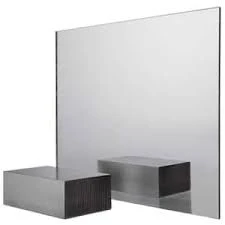

Understanding Float Glass and Tempered Glass
Float glass is a basic raw material widely used in various applications, from windows to skyscrapers. Its production involves a remarkably precise process that ensures high quality and durability. This article explores the characteristics of float glass, the tempering process, and the advantages of using tempered float glass in construction and design.
What is Float Glass?
Float glass is produced using the float glass process, where molten glass is poured onto a bed of molten tin. This method allows the glass to spread evenly, creating a smooth and flat surface. The result is a clear pane of glass that has uniform thickness and excellent optical clarity. Float glass can be processed further through various treatments, such as annealing, coating, and tempering, to enhance its properties and widen its applications.
The primary characteristics of float glass include its clarity, strength, and versatility. It is commonly used in residential and commercial buildings, including window panes, glass doors, and partitions. One significant advantage of float glass is its ability to be cut into various shapes and sizes, making it highly adaptable to design requirements.
The Tempering Process
Tempering is a heat treatment process that enhances the strength and safety of glass, making it particularly suitable for high-stress conditions. The process involves heating the float glass to elevated temperatures, around 600-700 degrees Celsius, followed by rapid cooling. This method alters the internal structure of the glass, inducing compressive stresses on the surface and tensile stresses inside. As a result, tempered glass is significantly stronger than its untreated counterpart, capable of withstanding impact and thermal stress.
Tempered float glass also has a unique feature when broken, it shatters into small, blunt pieces rather than sharp shards, reducing the risk of injury. This safety aspect makes tempered glass a preferred choice in various applications, including shower enclosures, glass doors, and facades of commercial buildings.
Benefits of Tempered Float Glass

1. Increased Strength The tempering process enhances the physical strength of the glass, allowing it to endure greater stress. This makes it ideal for areas subjected to high pressure, such as high-rise buildings and commercial spaces.
2. Thermal Resistance Tempered float glass can tolerate significant temperature variations without breaking. This resistance to thermal stress allows it to be used in environments where rapid temperature changes are common, such as in kitchens or exterior installations.
3. Safety As mentioned earlier, tempered glass shatters into small, safe pieces when broken. This property is essential in public spaces and homes, where safety is a primary concern.
4. Versatility Tempered float glass can be manufactured in different thicknesses and sizes, accommodating a wide range of design needs. It can also be combined with other materials and coatings to further enhance its properties, such as anti-reflective coatings or tinted finishes.
5. Aesthetic Appeal The clarity and smooth finish of tempered float glass add to the aesthetic appeal of buildings and interiors. Its ability to be customized with various tints, textures, and coatings allows architects and designers to use it creatively in their projects.
Applications in Modern Architecture
The combination of float glass and tempering technology has revolutionized modern architecture. Skyscrapers with glass facades not only look striking but also perform well in terms of energy efficiency and safety. Additionally, tempered float glass is extensively used in residential applications, such as curved glass in shower doors and large glass panels in living rooms, enhancing light while maintaining safety.
In conclusion, float glass tempered through a rigorous heating and cooling process offers a range of benefits that enhance both the functionality and safety of glass in diverse applications. As technology advances, the applications of tempered float glass will continue to expand, proving indispensable in the world of architecture and design. The synergy of strength, safety, and aesthetics makes it a material of choice for innovative and sustainable building solutions.